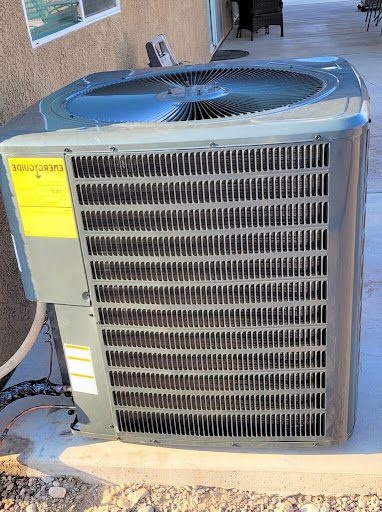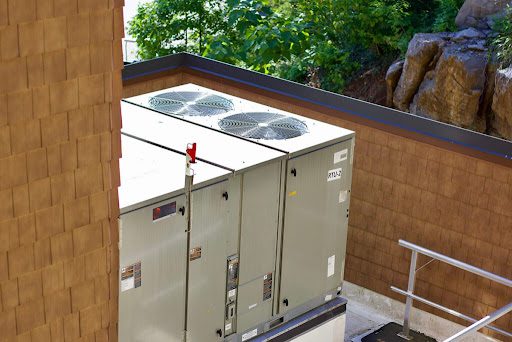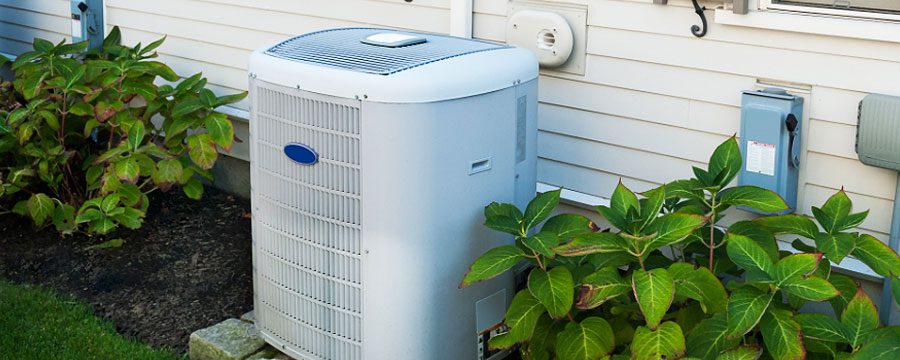Did you know that the hot weather in Temple, Texas, starts increasing in mid-May? Average high temperatures can be near 100°F during July and August.
As the temperatures begin warming up, you may wonder if your AC unit is up to speed, but have you heard about the new SEER ratings coming out next year?
Replacing your AC unit this year is an excellent option in prep for higher energy-efficiency ratings that will begin in 2023. If you’re still wondering what SEER ratings are and how they affect you, we have put together a complete guide about the new AC unit SEER ratings, so keep reading for more information!
What Is SEER Rating?
SEER is an acronym for Seasonal Energy Efficiency Ration. Math aside, it is your AC unit’s energy efficiency breakdown. An AC SEER rating encompasses the entire cooling season, considering fluctuations in outdoor temperatures and the stability of indoor temperatures.


One of the most important things to remember about SEER ratings is that it is the maximum efficiency. There are times that your AC unit will operate less efficiently than the number you see on an AC unit SEER rating.
SEER Rating Chart
SEER rating charts operate pretty simply – the higher the number, the more energy-efficient and cost-friendly your AC unit is. The formula to calculate this is the output rate during typical hot weather seasons by the watt-hour of energy consumed.
Rather than doing this by hand, most units have an energy guide sticker that tells you exactly what its rating is. SEER ratings can start at 10.0 and go above 20.0. You may find older units with an even lower SEER unit that was likely installed before changes took place in 2015.
Old AC units can result in higher energy bills and often have only one speed. It can be challenging to maintain ideal indoor temperatures and lower monthly costs.
What Are the New SEER Ratings?
In 2023, the new AC SEER rating minimum will increase to 14 for residential homes in the northern region of the United States. In southern areas, this number will increase to a minimum of 15. Why is the SEER rating higher in southern portions?
The government factors in that these states have higher cooling needs than northern states. The U.S. Department of Energy calculates energy savings anywhere from $2.5 to $12.2 billion once these new standards are in place.


Other changes happening in 2023 affect air-source heat pumps. Heat pumps operate under the heating seasonal performance factor (HSPF). The last changes that occurred with HSPF ratings were in 2015.
When the new SEER ratings roll out, HSPFs will increase from 8.2 to 8.8. The ultimate goal of higher standards and ratings is to improve the quality of energy-efficient equipment and to reduce energy expenditures.
Benefits of Updating SEER Ratings
There are pros and cons to updating the ratings, but ultimately it can save you money and keep your HVAC or AC unit operating smoothly. The only con is upgrading your AC unit with a higher SEER rating that meets the new requirements will cost more money than installing lower energy-efficient units.
Yet, you will save money on yearly energy costs in the long term and will notice better performance. Some experts state that you could save $200 annually by switching out your old unit for a new one.
Upgrading Your AC Unit
AC units are typically part of an HVAC, which stands for heating, ventilation, and air conditioning. These units can be split systems with central air conditioning and a heat pump or furnace. Or, they can be single units installed.
You can decide on switching out your AC unit or entire HVAC system. HVACs only last 15 to 20 years, so if you are nearing this timetable, you should consider purchasing a new HVAC unit versus repair.
Most people swap to electric AC units and furnaces. However, temperatures in Texas can be milder than their northern neighbors, and you may only need an air-source heat pump.
Upgrading your AC unit can also allow a technician to educate you on proper sizing since larger air conditioners are not necessarily more effective and can put more strain on your system.
At Air Systems Design, we factor in the hot Texas summers and weigh the pros and cons of a new AC unit. With 2023 just around the corner, you could save more money by purchasing a new air conditioner before costs increase.
Does AC Maintenance Affect Energy Costs?
Once you purchase a new AC unit, you should ensure it is regularly maintained and checked. Some AC checks you can do yourself, such as replacing the air filter.


Others you should leave to the professionals. A skilled technician can check your coils, filters, fins, drains, and electrical components.
They can spot any problems before they become significant issues and save you money with simple repairs. These HVAC professionals can alert you if your HVAC unit will not adhere to minimum SEER guidelines starting next year or help you prepare for a hot summer!
Installing a New AC Unit
Whether you purchase an individual AC unit or replace your entire HVAC system, you need skilled and reliable professionals on your side. As SEER ratings increase next year, now is a great time to replace your unit with updated standards, saving you time, money, and headache down the road.
Not only can an improved SEER rating help you reduce energy bills, but it can help adequately cool your home and help your HVAC system work properly by ventilating and filtrating particles.
Are you ready to get started? Contact us today for more information on a new AC!



